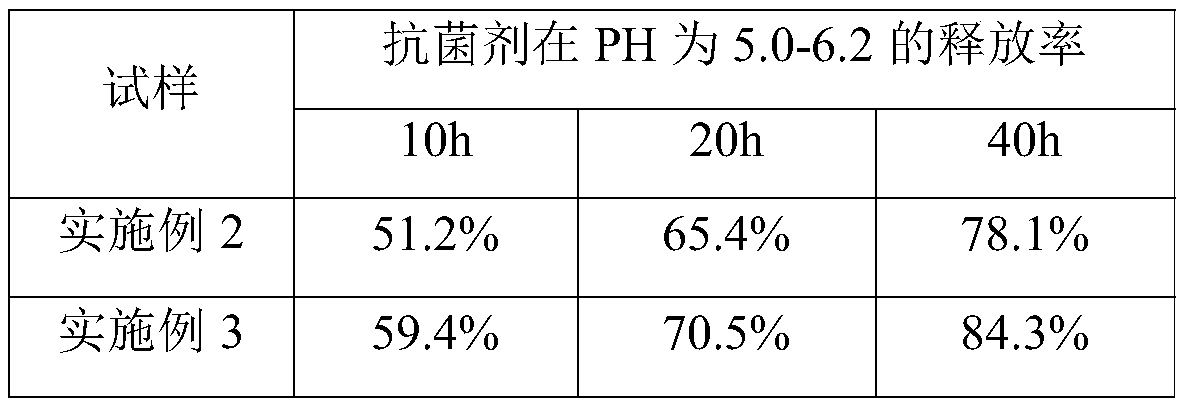Orthopedic wound antibacterial protective film and preparation method thereof
A technology of protective film and wound, applied in the field of biomedical materials, to achieve the effect of reducing antibacterial agents and reducing the cumulative damage of drugs
- Summary
- Abstract
- Description
- Claims
- Application Information
AI Technical Summary
Problems solved by technology
Method used
Image
Examples
Embodiment 1
[0036] An antibacterial protective film for orthopedic wounds, including an endogenous antibacterial protective film that is in contact with the wound and has a pH-sensitive slow-release function, and an exogenous antibacterial film that is in contact with the external environment and has the function of blocking and inhibiting exogenous antibacterial agents. Antimicrobial protective film. The preparation method comprises the following steps:
[0037] S1. PH-sensitive chitosan and nano-silver are dissolved in trifluoroethanol, and the pH is adjusted to 8 to obtain a polymer mass fraction of 4% spinning solution A; the quality of the nano-silver is the pH-sensitive 8% of the quality of chitosan;
[0038] Described pH sensitive type chitosan preparation method is as follows:
[0039] S101. Diamino ortho ester monomer and an appropriate amount of triethylamine are added to the reaction vessel, then methacrylic anhydride is dissolved in methylene chloride (the molar ratio of dia...
Embodiment 1 and comparative example 1
[0056] Table 1 embodiment 1 and comparative example 1 to 3 antimicrobial release rate
[0057]
[0058] As can be seen from Table 1, the orthopedic wound antibacterial protective film prepared in Example 1 has a small release rate of antibacterial agent under neutral conditions, and under acidic conditions, the release rate can reach 81.0% after 40 hours, indicating that the orthopedic wound antibacterial The protective film is acid sensitive. When the wound is under acidic conditions, the orthoester bond in the pH-sensitive chitosan fiber membrane is gradually degraded, so that the cross-linked network is untied, and the antibacterial agent wrapped inside is gradually released slowly, realizing the antibacterial function of endogenous infection. Comparative example 1 only includes the pH-sensitive chitosan fiber membrane, and its release rate is not much different from that of Example 1. However, due to the lack of exogenous antibacterial protective film, when used for wou...
Embodiment 2-3
[0060] Compared with Example 1, the orthopedic wound antibacterial protective film provided by Example 2-3 is different in that, in step S1, the quality of the nano-silver is respectively 2% of the quality of the pH-sensitive chitosan and 10%, the others are basically the same as in Embodiment 1, and will not be repeated here.
PUM
 Login to View More
Login to View More Abstract
Description
Claims
Application Information
 Login to View More
Login to View More - R&D
- Intellectual Property
- Life Sciences
- Materials
- Tech Scout
- Unparalleled Data Quality
- Higher Quality Content
- 60% Fewer Hallucinations
Browse by: Latest US Patents, China's latest patents, Technical Efficacy Thesaurus, Application Domain, Technology Topic, Popular Technical Reports.
© 2025 PatSnap. All rights reserved.Legal|Privacy policy|Modern Slavery Act Transparency Statement|Sitemap|About US| Contact US: help@patsnap.com


